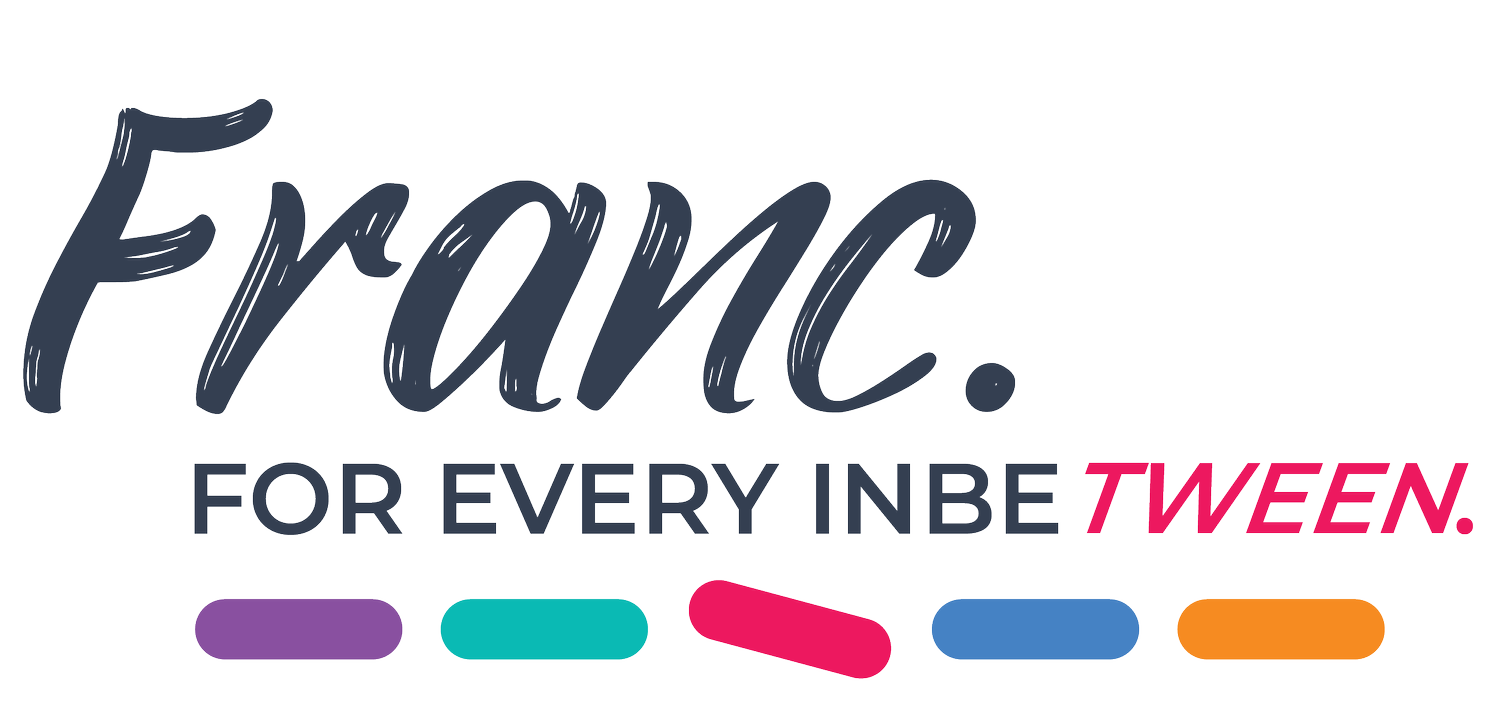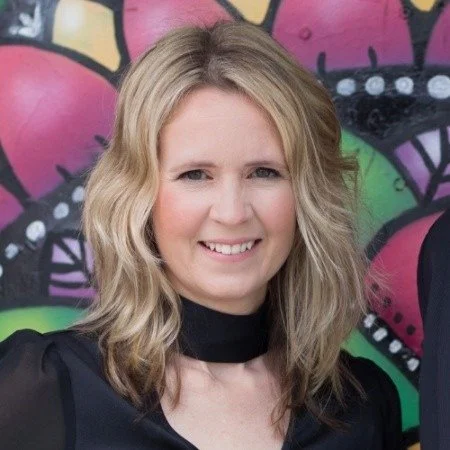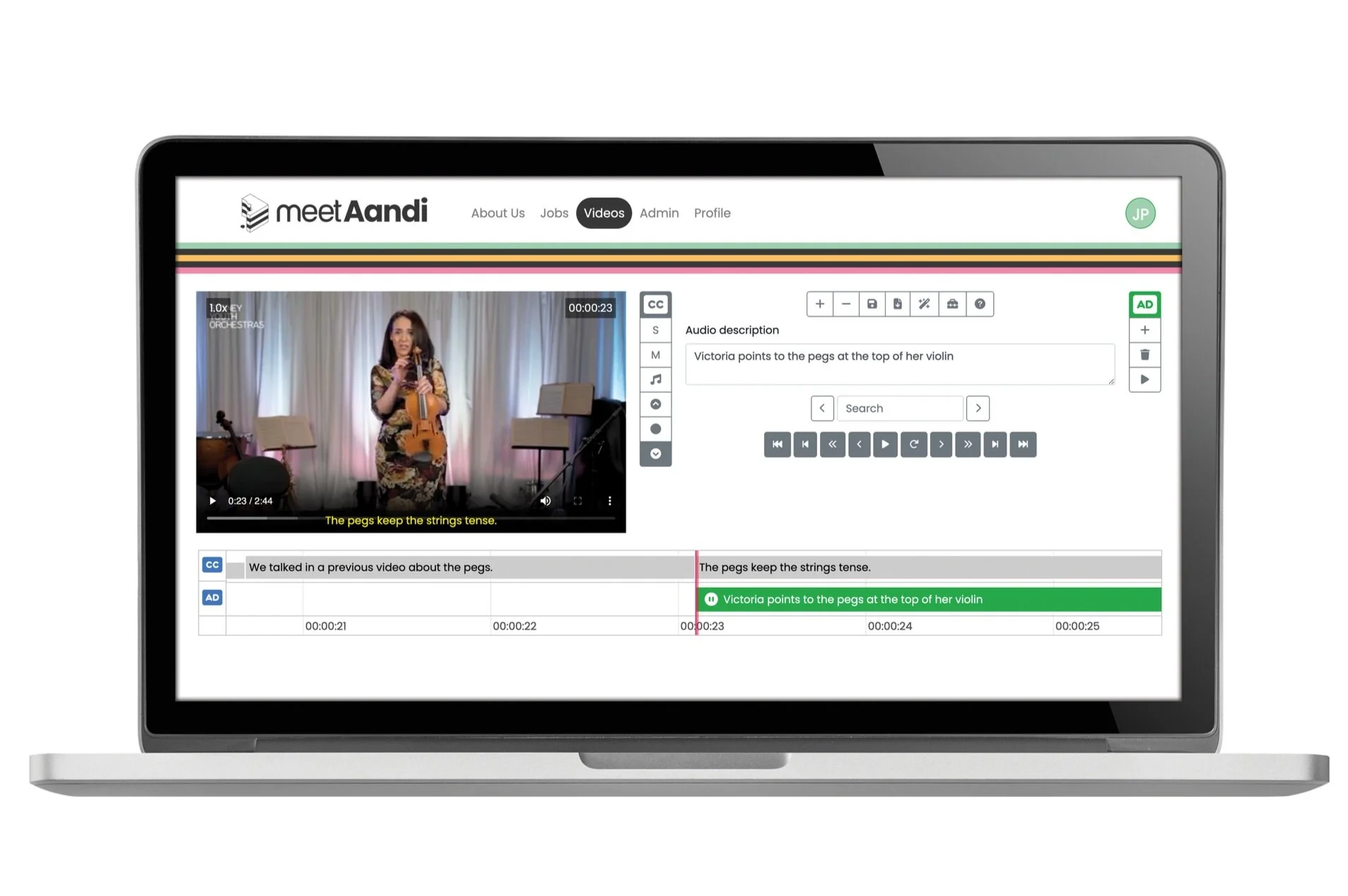Entrepreneur: Belinda Vesey-Brown
Belinda Vesey-Brown. Belinda is a dedicated marketing professional who has spent her career leveraging her passion for enhancing accessibility to make a positive impact in the world. With nearly 30 years of experience in marketing and communication, she has embarked on a journey guided by the belief in the profound power of accessible information.
Having founded and led multiple businesses centred on marketing and communication, Belinda realised the critical importance of ensuring that online material is accessible to all. Recognising the barriers that many individuals face in accessing and understanding digital content, she identified the need for increased education and awareness among content creators. This led her to launch Meet Aandi, a platform dedicated to helping others meet their accessibility and inclusion requirements through comprehensive solutions and education on online accessibility.
Belinda's dedication to promoting accessibility and inclusion extends beyond her professional endeavours; it is a personal mission that drives her to make a tangible difference in the lives of others.
You have built several businesses from the ground up – can you tell us a little more about your career journey to date?
I knew very early in my career that running my own business was something that I wanted to do. I’m a first generation business owner which was a big deal as I had to overcome my families limiting beliefs. They said “are you sure you want to do this?"
I completed a Bachelor of Visual Arts specialising in graphic design and after graduating found myself working for others in design for a few years before making the decision to start my own business from the ground up.
I started Brio Group (formally known as Red-i Design) in 2002 and have never looked back. I’m not saying it was easy and going this route is not for everyone, however I am really proud of what I have achieved. For our type of business in Queensland we were in the top 2% for size and turnover.
Right from the beginning we were doing a lot of work for the Brisbane City Council and everything we designed had to be supplied in an accessible PDF to meet the accessibility standards.
This was very progressive at the time and very new for us with the team finding this quite frustrating to do as it was very time consuming. So, I went out and found a more efficient and cheaper solution overseas. Learning about document accessibility on the go made me aware of how powerful this is and the difference it can make. When I discussed accessible design with my other clients they were typically not interested in providing accessible design because they had no real incentive to do so. Again, I thought there was a missed opportunity, that needed to be addressed.
I started TaggedPDF in 2010 and not long after that commenced a partnership with Vision Australia. Together we have been influencing policy and training people on accessible documents and the importance of accessible communication.
But this was not going far enough and as video grew as an online resource especially in the education space, I knew I had to do more. Meet Aandi grew out of the role that AI can play in providing a cost effective solution to providing video captioning, audio descriptions and transcripts.
It’s early days for Meet Aandi but I’m excited to be on this journey to level the playing field by making online communications available to people of all abilities.
How did the idea for Meet Aandi come about? Did a specific experience or person inspire you?
Actually one of the things that I am really excited about is the role that Meet Aandi can play in online music lessons in video format.
The Australian Youth Orchestra had used COVID funding to develop online music lessons in video format for all the instruments in the orchestra. A really exciting project, however none of these videos were accessible which meant students with different learning abilities were disadvantaged, especially people with low vision or who are blind.
I am a firm believer that the standard you walk past is the standard you accept. I couldn’t accept this, so instead I offered to get involved in a pilot program (as a step to unlock some funding) to use Meet Aandi to adapt the videos to the needs of students of all abilities rather than the other way around.
This is what inspires me, and why I know that Meet Aandi is needed.
What are some of the most rewarding experiences you've had since founding Meet Aandi?
The pilot for SYO is definitely rewarding, in particular I am working with a blind student Gem who is providing me the insights we need to better understand what changes are needed to on line music lessons which in turn is going to make a difference to so many other students of varying abilities.
I was really lucky to receive some funding and have just travelled to the United States of America to participate in an accessibility conference in Las Vegas. When I stood up on stage I was a proud Australian sharing my story and an Aussie innovation. It was a little scary actually but exciting and I can’t wait to see how far this journey can take me and my team.
I know that Meet Aandi is a solution to just one small part of what is needed to level the playing field. And that’s OK by me.
The little changes each and every one of us makes today, is changing the lives of others for the better. I love the idea that I will never really know just how many people will exponentially benefit from Meet Aandi, nor do I need to know. For me that’s the reward.
Many teens want to create their own online content, like YouTube videos. How could Meet Aandi help them make sure their content is inclusive and accessible to everyone?
There are a range of things that we can all do to make our content more inclusive and accessible.
By simply thinking about how the content is being presented in the planning stages, consider how those who could be blind, deaf, or even speak English as a second language would engage with the content. This alone will make a big difference. Also, use simple and inclusive language and consider how the visual details in the video can be described.
Being more diverse and inclusive doesn’t mean having to tick every box but making images and words more inclusive and diverse will go a long way in normalising our differences.
Meet Aandi can help with captioning audio descriptions and transcripts, it’s easy to use and at $1 per minute of video is cost efficient. The cloud based solution is easy for anyone to use, no editing experience needed.
Beyond people with disabilities, who else can benefit from the features of Meet Aandi, like captions and transcripts?
Everyone has a different learning style some prefer hearing, others listening while others like me are more visual learners. There are also people where English is not their first language while others may have learning difficulties (temporary or permanent).
Recently, I had an infected eye and had difficulty focusing on my computer; having the information read out to me would have really helped for those few days when I had a temporary disability.
Meet Aandi can provide video in formats that people of all abilities and preferences can understand. This levels the playing field so everyone can equally benefit from the material.
Are there additional accessibility features you are working on to cater to even wider audiences?
We are looking at bilingual features to cater to different languages and open up content to a wider audience. This is really exciting in a country that is so multicultural, with access to video content developed in every country.
What advice would you give to young professionals just starting their careers in the communications space?
Explore your options and do something you love. Whether that be the sectors you work in, or the type of work you do. And never stop being curious, the world is changing so rapidly, make it an adventure that never ends.
I am a big supporter of lifelong learning. That doesn’t necessarily mean returning to formal education, but it does mean being open to new things.
Also, have empathy. Everyone is different, and that’s good. Accept their differences and embrace your differences. It’s what makes us human.
What are your thoughts on the importance of diversity and inclusion in the workplace?
It’s one thing to invite someone to sit at your table but if you ignore them that’s not being inclusive.
We need to stop thinking about ticking boxes but strive to change the mindset that being different is somehow wrong. Let’s embrace that being different is enriching and exciting, and how we can learn from each other.
How does Meet Aandi balance the accuracy of AI with the nuances of various cultures and languages?
AI is never perfect as it is only as good as its programming.
Meet Aandi has been built with machine learning, which means that the user can teach Aandi more accurately. Language, naming and cultural nuances, including learning accents, make the outcome more accurate.
A key reason we have introduced accessible training as part of Meet Aandi is to show content developers how to produce videos and documents that are more accessible. That way, bias can be corrected early in the planning stages.
What impact do you hope Meet Aandi will have on creating a more inclusive society?
Change has to start somewhere and every time Meet Aandi is used is a positive step toward change. And as I mentioned earlier it’s the exponential impact that I don’t see that is for me, the most exciting.
Because this is my journey now, and that of my team, we see barriers to learning or just day to day getting on with life stuff everywhere. Change can’t happen overnight but it can happen.
When I close my eyes, I see SYO’s entire orchestra of musical instrument videos fully accessible, including for students who are blind. This goes way beyond the impact it makes on one student, their family, others who are blind and want music to be a part of their lives, and the community as a whole.
It’s a pretty exciting vision and one I am proud to be playing a role in.
Franc’s Fast Five
Favourite subject in school? Without doubt it was art, I have always had a creative side and a strong visual sense.
What is the first thing you do each day? Sounds boring but I love my first cup of tea because it’s during this time that make I connect and check in with others be it family, friends or work colleagues.
Go-to snack? I am not much of a snacker, but my Auntie Jeanette makes the best date loaf and jam drop cookies. If I’m lucky enough to be given some they are great snack treats.
Texting or Talking? Talking, talking and talking - so I can get my 5 billion words a day out :)
Biggest fear? Funny enough it’s failure however I am constantly raising the bar and looking for new options. I guess I am driven not to fail because I am fearful of what that means if I do.




